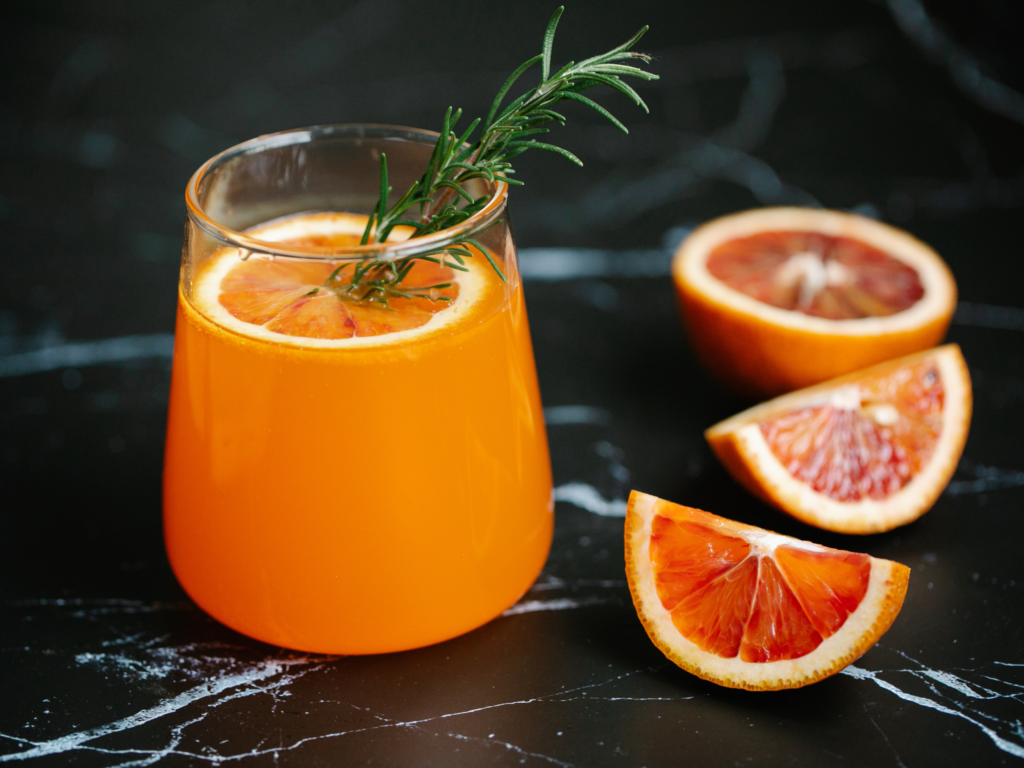Conveying Taste through Color (Part 1): Sight
Picture a fizzy beverage with a bright red hue sitting in front of you. Would you expect a specific taste if you were to take a sip? When reaching for any food or beverage item, there is a good reason why a taste comes to mind before your sense of taste is engaged.
Interacting with color is an essential part of one’s dining experience. When items cannot be seen, in an instance such as a “Dining in the Dark” event, a phenomenon occurs in which the palette can become confused. Without a sense of sight, dinner-goers may have trouble identifying the food in front of them. According to Tasting Table, participants often mistook their corn soup for butternut squash or sweet potato. Despite these incorrect guesses, it is essential to note that participants were guessing food items within the same orange color category, pointing to taste’s association with specific colors.
Sometimes, color can completely overpower taste perception. In a study detailed in Science Daily, two cups of orange juice were presented to participants. One cup was the brand’s original color and the other had been dyed darker with food coloring. Participants believed the two beverages tasted different despite color being the only true difference. In the second tasting, the orange juices were the same color, but one cup had extra sugar added to it. This time, the participants were unable to detect a difference. Similar studies, such as one featured in Brain and Language, have been performed with white wine dyed red, fooling wine experts. The valuable psychological connection between color and taste can impact how a product is experienced.
Although flavor assumptions may vary by culture, The Cravings exhibition at the London Science Museum demonstrates that individuals from different continents can share similar taste assumptions regarding a color. If earlier, you believed a vivid red drink would taste sweet, a large portion of individuals from around the globe would agree. From a visual standpoint, exhibition participants thought a red beverage would be the sweetest, followed by blue and purple. It is important to note that research on color, its impact on taste, and their relationship’s strength and depth is ever-evolving.
Today’s consumer is social media-savvy with an affinity for aesthetics. Phrases like “phone eats first” have become commonplace in one’s consumption experience. This behavior provides a unique opportunity to offer a product that stands out by utilizing colors that pop. In today’s social media-dominated society, bold, intriguing colors will earn you a spot in the forefront of your consumer’s minds and a feature on their feeds. As acknowledged in Flavour Journal, it is imperative that color and flavor work in tandem to entice consumers and then deliver on expectations.
At Sensient, we have perfected the delicate balance of art and science. We recognize the importance of stimulating the senses backed by our technical capabilities to help formulate your unique ingredients; it’s in our name. Picture a plant-based patty appearing like it just met the flame of a grill or a florescent botanical beverage utilizing our taste technology to match its intriguing appearance. Our team of experts will be your dedicated partner in creating captivating color and flavor pairings to push your product to the next level.
Color us excited- we’re here to help.
References:
https://www.tastingtable.com/1033866/the-science-behind-how-color-impacts-taste/
https://www.sciencefriday.com/articles/can-taste-color/
https://www.grubstreet.com/2022/09/inside-a-blindfolded-dinner.html
https://www.ncbi.nlm.nih.gov/pmc/articles/PMC6112041/
https://www.convenience.org/Media/Daily/2023/February/20/5-Vibrant-Colors-Baked-Goods_Foodservice
https://www.realclearscience.com/blog/2014/08/the_most_infamous_study_on_wine_tasting.html
https://flavourjournal.biomedcentral.com/articles10.1168/s13411-015-0031-3#:~:text=Colour%20is%20the%20single%20most,flavour%20of%20food%20and%20drink.
